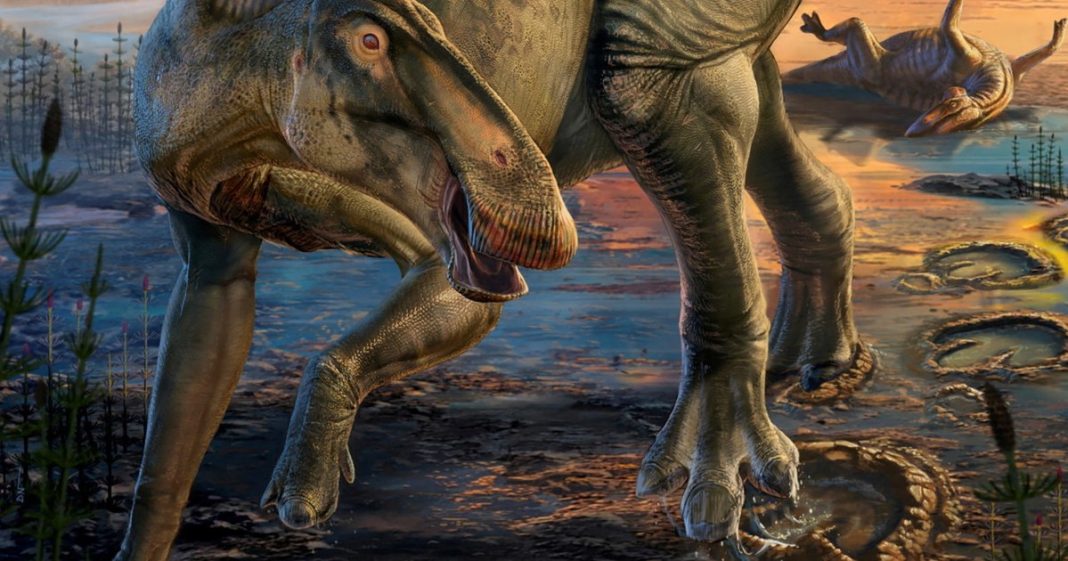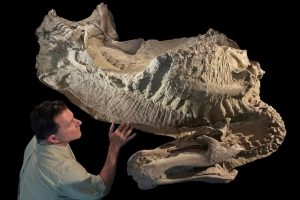Key Takeaways
- First dinosaur discovered with hoof-like feet, challenging previous understanding
- Exquisitely preserved fossils reveal complete external anatomy of Edmontosaurus
- 66-million-year-old specimens show convergent evolution with mammals
Scientists have made a groundbreaking discovery in Wyoming: two remarkably preserved dinosaur “mummies” revealing the first-ever evidence of hooves on a dinosaur. The Edmontosaurus fossils, dating back 66 million years, provide unprecedented detail about the creature’s external appearance.
The specimens include a 40-foot adult and a juvenile half that size, both preserved through a unique process called clay templating. A thin clay layer formed over their carcasses, capturing the contours of their skin and flesh in extraordinary detail.
“We’re seeing the full profile of the dinosaur for the first time,” said University of Chicago paleontologist Paul Sereno, lead researcher of the study published in Science. “We’re confident what it looked like.”
Not Egyptian-Style Mummies
Despite the “mummy” label, these fossils don’t contain DNA or tissue. “It’s a clay mask,” Sereno explained. The term originated from similar fossils found over a century ago in the same Wyoming location.
Cretaceous Ecosystem Dominator
Edmontosaurus lived during the late Cretaceous Period, just before the asteroid impact that wiped out dinosaurs. The plant-eating dinosaur with its distinctive duck-like bill roamed western North America alongside Tyrannosaurus, Triceratops, and Ankylosaurus.
“It is by far and away the most common dinosaur in its ecosystem,” Sereno noted. “It was giant herds. It’s the cow of its day.”
Despite reaching lengths of 42 feet—comparable to T. rex—Edmontosaurus was a frequent prey. Fossil evidence with teeth marks confirms it was “on the menu” for the apex predator.
Revolutionary Hoof Discovery
The hoof structures represent a major evolutionary breakthrough. While mammals like horses and cows later developed hooves for weight support and shock absorption, Edmontosaurus achieved this millions of years earlier.
“It’s for hard land, efficiently walking—maybe even running—over the surface,” Sereno explained.
This represents convergent evolution, where unrelated species develop similar features independently. The dinosaur’s locomotion was versatile: walking on all fours when slow, but bipedal when running. “The only animal we can point at as a parallel is a kangaroo,” Sereno said.
Complete Physical Profile
The fossils reveal Edmontosaurus had a continuous midline feature with a fleshy neck crest that transformed into tail spikes. Its skin featured tiny, pebble-like scales similar to modern lizards.
Researchers believe the dinosaurs likely died during a drought, with their dried carcasses later covered by flash floods that created the preserving clay coating.
During their Wyoming excavations in the “mummy zone,” the team also uncovered Tyrannosaurus and Triceratops fossils. Intriguingly, Sereno noted the T. rex specimen “doesn’t even have scales,” suggesting it may have been feathered.





